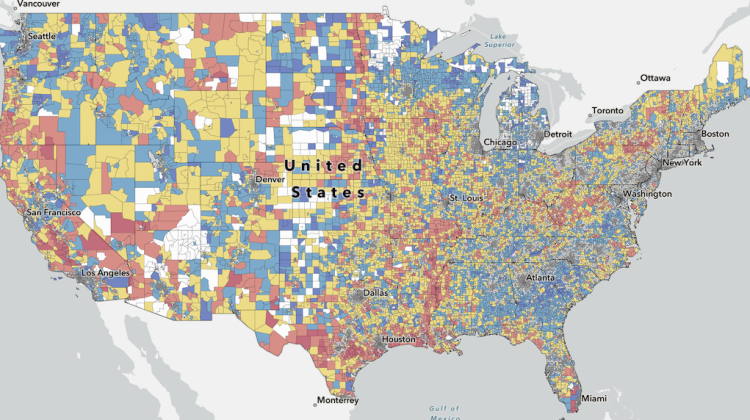Understanding the Impacts of Floods on Rental Markets

National risk index for riverine flooding, displayed by census tract. Credit: Federal Emergency Management Agency, National Risk Index
To many, the damage wrought by a tornado, hurricane, or wildfire appears to be an acute event. A disruption that is occurring with increased frequency due to climate change in the anthropocene. These disasters can also be understood as long-term social processes where political decisions about physical, economic, and social investment, or lack thereof, shape vulnerability to the impacts of these disasters. Understood through this lens, these events can no longer be categorized as natural, because the damage they wreck physically, financially, and socially would be contained if we invested in vulnerable communities.
As climate related disasters continue to increase in frequency and intensity, scholars have sought to understand a disaster's impact on health, migration patterns, and employment, yet little is known about how disasters systematically affect renters and their rents in the near term. A new paper in the journal Urban Affairs Review leverages U.S. Census Bureau data on rents, demographics, and housing to identify the effect of severe flooding disasters on renters and rental prices across socioeconomic status.
“Our findings show that severe floods are associated with significant increases in rents for households renting units priced at the bottom of the rent distribution, but not at the middle or the top,” says Mark Brennan (PhD ‘20), lead author of the paper. “Our paper addresses an important empirical question in urban policy analysis about how market actors treat vulnerable groups affected by societal shocks as well as a related theoretical question about how to ensure that all households, especially those with the lowest incomes who are most vulnerable to climate disasters, have the support they need to recover and to thrive after these events.”
Brennan is a Research Affiliate at MIT and will begin an assistant professor at the Rutgers School of Business-Camden role in the Fall of 2024. His work strengthens the supply chains that keep people housed, fed, and healthy. Additional authors include Tanaya Srini (MCP ‘20) and Justin Steil. “Using a difference in differences approach to the analysis, we found that renter households with low-incomes signing a new lease face a 5% increase in rent attributable to the disaster the year after and a further 6% increase two years after the disaster.” notes Steil, Associate Professor of Law and Urban Planning at DUSP. “Nationally roughly half of renter households are households of color, suggesting that the effects of these post-disaster increases in rent likely fall disproportionately on households of color.”
Read their full paper, “High and Dry: Rental Markets After Flooding Disasters”


